Forgive me if I am preaching to the choir here, because I know that many of my readers are expert gardeners and far more competent than me. So I shall be writing mainly for those who, as I do, wish to be better gardeners and I hope I may even have something for the more accomplished.
Gardening is expensive. Perhaps not as expensive as the Victorian horticulturalists who spent vast fortunes on plant hunting expeditions and heating enormous greenhouses containing rare and delicate species. (The greenhouse at Chatsworth House was so huge that you could drive through it in a horse and carriage). Nor do our more interesting varieties of daffodil cost hundreds of pounds. Yes, even the cultivated, humble daffodil was once a rare collector’s piece.
But a visit to a garden centre usually results in returning with one’s purse considerably lighter. We go in, determined to only buy something for that space on the edge of the border, and come out laden with flowers, herbs, shrubs and even trees.
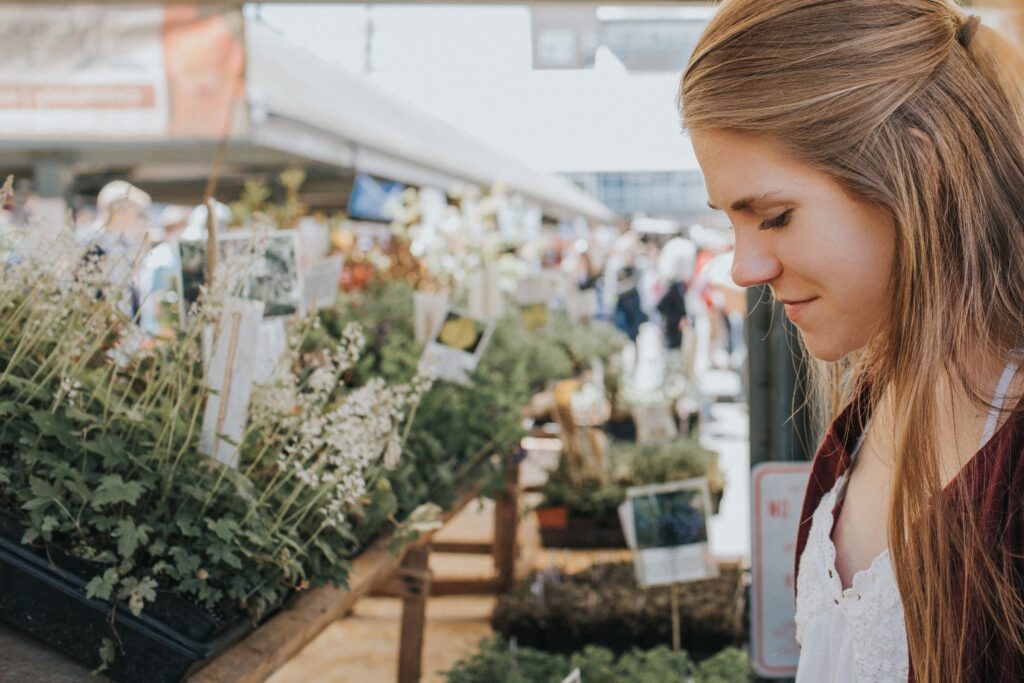
Garden centres are to gardeners as catnip is to cats. It is too much to ask that we don’t succumb to their charms? The solution, I would argue, is simply not to go there. After all, there are many other ways to source plants.
The garden centre alternative
One reason to limit one’s addiction to garden centres is, strangely, an environmental one. Almost all garden centre plants are contained in plastic when you probably have more than enough plastic plant containers at home.
Further, their plants will have been doused in pesticides and other chemical nasties. This is true even for those plants sold as ideal for pollinators, since ironically, they contain toxins detrimental to bees. (If you want to discover more on this topic, I highly recommend Dr Goulson’s The Garden Jungle.) Those of us trying to garden organically are often unwittingly introducing chemicals into our gardens via the soil of garden centre plants. The safest option, therefore, is to grow from seed.
Seeds
If you want to be extra virtuous, you can buy seeds that are organic very easily on-line. The Internet is also the best place to find more unusual species and since seeds are light, postage is seldom a problem.
But before purchasing anything, I’d recommend pulling out all the seeds that you already have. My normal modus operandi would be to go to the garden centre and pick out all the beautiful packets that catch my eye. There is no way that I would have time to plant them all. This year, to combat such craziness, I have checked my seeds and organised them by date of planting.
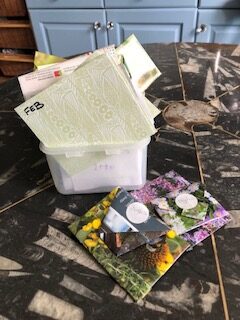
If there is space for more, I can note it on my wish list.
One thing I have done is take seeds from the seed heads of successful plants to sow again this year. There are many beautiful flowers that are really easy to recover seeds from including: poppies, love-in-the-mist (Nigella) and honesty. Once the plant has flowered and the seed head/seed formed and dried, simply shake them into an envelope and label.
If you have excess seeds, of course, swap and share with friends. Commercial packets often contain many more seeds that one has space to sow. And those you have taken from garden are likely to thrive in ones close by, since soil conditions and temperature are similar.
Pinch an inch
Perhaps my favourite way of getting new flowers from old is via cuttings. Ever since I was first successful in increasing my number of very bog standard geraniums, I have been hooked.
The way to take cuttings is the same for most plants. Find a healthy stem that has no flowers, snip it about six inches down just under a node (where the leaf emerges from the stem). Strip any leaves that are in the bottom inch or two and pot in well draining soil. If you have rooting hormone powder, dip the bottom end in that first before planting up. Keep the soil moist until roots form and repot.
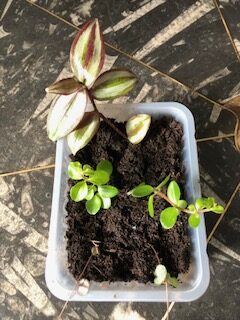
Last Sunday, I was at my niece’s for brunch and admiring her many and varied pot plants. Would she mind if I took a few wee cuttings to try to bring on at home? Of course not.
Since one good turn deserves another, I took a piece of my now Triffid-like angel-winged begonia for her. I hope it thrives.

This plant had been given to me as a tiny cutting and now is about two feet tall. In fact, most of my truly successful plants started with someone else. What started as a tiny rose geranium now fills two giant pots and several smaller ones. A number have been given to friends.
If you don’t have any green-fingered friends to rely upon, there are always cuttings to be taken from walks or even from plants that venture over the fence. My neighbour’s beautiful honeysuckle wandered into my territory and I took a little snip. It’s now a thriving climber.
Self-replicating plants
There are certain plants that are guaranteed to give the novice joy. They are the ones which, with minimal effort on our part, just reproduce. A few years ago, I decided that I wanted some spider plants, but they were not available in the shops. So, I went online and ordered four tiny plants – one an exotic curly one. Their little babies hang adorably from the mother plant and if you want to start a whole new plant, you only have to take a ‘baby’ and plant it in its own soil. I think that here I am a victim of my own success and have more spider plants than I know what to do with and am running out of friends to give them to.
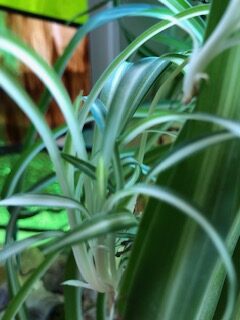
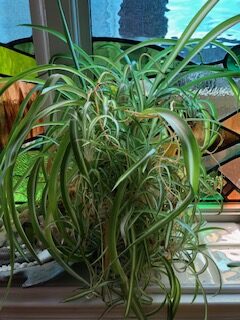
The beauty of bulbs
Spring is my favourite season and I eagerly await the emergence of the first flowers as winter makes its farewell. Our garden is full of bulbs and my husband planted even more last autumn. The wonderful thing with bulbs is not only that they reappear each year, but that they divide and provide ever increasing numbers of flowers. For perfect ones, it is advisable to dig up the bulbs and divide them every few years, but I confess I am too lazy to do that.
I also recycle any lovely flowering bulbs that I have been given. Many a daffodil and hyacinth in my garden began as a gift.
And speaking of gifts, flowers are always the most welcome. I love to give and receive bouquets of garden flowers. They require no air miles or unnecessary packaging. Cuttings and seedlings are wonderful too. When we are all conscious of living costs, such a thoughtful gift delivers without impacting too heavily on our pockets.
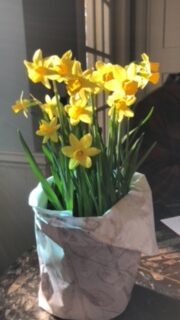
Image: Karen Costello-McFeat
Being a canny gardener really means being a little more mindful of how we can use (and reuse) what we already have. And if you really want to purchase plants ready-made, my niece gave me a great tip. Buy the sad ones in the bargain bin! These plants, which might otherwise be thrown away, just need a little nurturing and time. They will almost certainly delight you next year.
Next week, I’ll look a gardening produce on a budget. I hope to see you then.

Well your garden is beautiful, so we’ll worth the effort and the expense 🥰
*well
Thank you – it is a great source of joy!! xx
You’re definitely right about the dangers of garden centres 🤣. After the last few years of change, I can’t wait to find a new garden (and house 😉) to get stuck into. Thanks for this post as it reminds me I don’t have to spend a fortune when we move in
I’m sure that you’ll make it amazing. And if you want any cuttings – you know where to come! xx